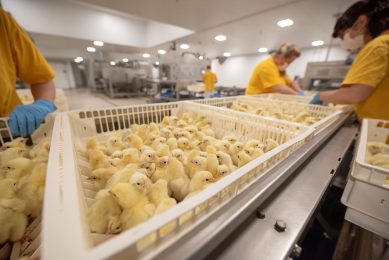High level of worker safety in poultry industry
According to the National Chicken Council, the poultry industry is working to improve worker safety in the workplace and to reduce the incidence of injury and health conditions.
The rate at which injuries and illnesses occur among poultry processing workers in the U.S. has reached its lowest level, and according to the Bureau of Labour Statistics, this level is below the rate found in food manufacturing in general.
In 2006, the rate of injury and illness in the poultry processing sector was 6.6 per 100 full-time workers, down from 7.4 in 2005. The rate has been cut to less than half the level of 14.2 recorded in the year 2000.
Under an agreement signed with OSHA in 2007, NCC said companies in the chicken and turkey industries will implement new programs and initiatives to bolster workplace safety, including developing training and education programs on equipment safety; developing and communicating information on the recognition and prevention of workplace hazards; and convening a dialogue on equipment safety issues to help forge innovative solutions in the workplace.
The NCC highlights several policies and programmes to help the industry improve worker safety:
– Training of employees in how to do their jobs in the safest and least stressful manner possible
– Training to be conducted in multiple languages as needed to meet with needs of a diverse workforce
– On-site wellness centres so employees can receive medical attention on company time
– Creating more automated jobs as improved technology becomes available.
– Technological improvements used to perform portions of the job, to improve workplace ergonomics
– Assignment of full-time safety managers and registered nurses to monitor the health and safety of plant employees and treat problems at an early stage.
– Training to be conducted in multiple languages as needed to meet with needs of a diverse workforce
– On-site wellness centres so employees can receive medical attention on company time
– Creating more automated jobs as improved technology becomes available.
– Technological improvements used to perform portions of the job, to improve workplace ergonomics
– Assignment of full-time safety managers and registered nurses to monitor the health and safety of plant employees and treat problems at an early stage.
The National Chicken Council represents integrated chicken producer-processors, the companies that produce, process and market chickens. Member companies of NCC account for approx. 95% of the chicken sold in the US.
Related links:
Join 31,000+ subscribers
Subscribe to our newsletter to stay updated about all the need-to-know content in the poultry sector, three times a week. Beheer
Beheer








 WP Admin
WP Admin  Bewerk bericht
Bewerk bericht